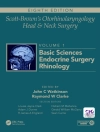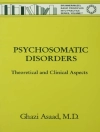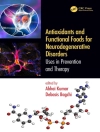Acute coronary syndromes affect millions of individuals annually by ca- ing considerable morbidity and mortality. In developed countries this d- ease remains the number one killer, despite significant improvements in its management over the last several decades. Acute coronary syndromes are challenging, as the field is a fast moving one with a rapid proliferation of drug and device trials. These new studies become incorporated into se- rate guideline recommendations by both American and European writing committees, which are frequently updated. Moreover, there are separate guideline recommendations for stable angina, non-ST-elevation acute coronary syndrome, ST-elevation myocardial infarction, and percutaneous coronary intervention. This may make it relatively difficult for practiti- ers to keep up-to-date with the field. Unfortunately, there is often a gap between the guideline recommendations and the care that is delivered in the ‘real world. ’ In this book we have attempted to distil the considerable literature on this topic into an accurate, succinct and up-to-date review of acute coronary s- dromes. Many specialties are involved in the diagnosis and management of these syndromes; therefore, our audience includes a variety of practitioners: cardiologists, general practitioners, emergency medicine physicians, nurses, nurse practitioners, nursing students, physician trainees, medical students, pharmacists, and paramedics. We take the reader through the epidemi- ogy and prognosis, diagnosis and clinical manifestations, risk stratification, and percutaneous and medical therapies across the entire spectrum of acute coronary syndromes. We end with a discussion on current controversies and future approaches to the treatment of acute coronary syndromes.
Inhaltsverzeichnis
1 Preface.- 2 Epidemiology – US, European, and global perspectives; unstable angina, NSTEMI, STEMI.- 3 Diagnosis – symptoms, biomarkers, ECG.- 4 Risk stratification – TIMI risk score, GRACE risk score, CRUSADE/PURSUIT risk score.- 5 Medical therapy – antithrombotics, statins, etc.- 6 Percutaneous therapy – culprit vessel versus mulitvessel; BMS vs DES.- 7 Surgical therapy.- 8 Prognosis. – 9 Controversies – optimal antithrombotic strategy, fibrinolysis versus primary PCI for STEMI, preferred mode of revascularization (bare metal stents versus drug eluting stents versus CABG). – 10 Future approaches – CT angio and other evolving imaging modalities, biomarkers, proteomics, genomics, angiogenesis, myogenesis. Appendix A – Practice Guidelines – ACC/AHA and ESC.- Appendix B – Synopsis of Key Trials.












